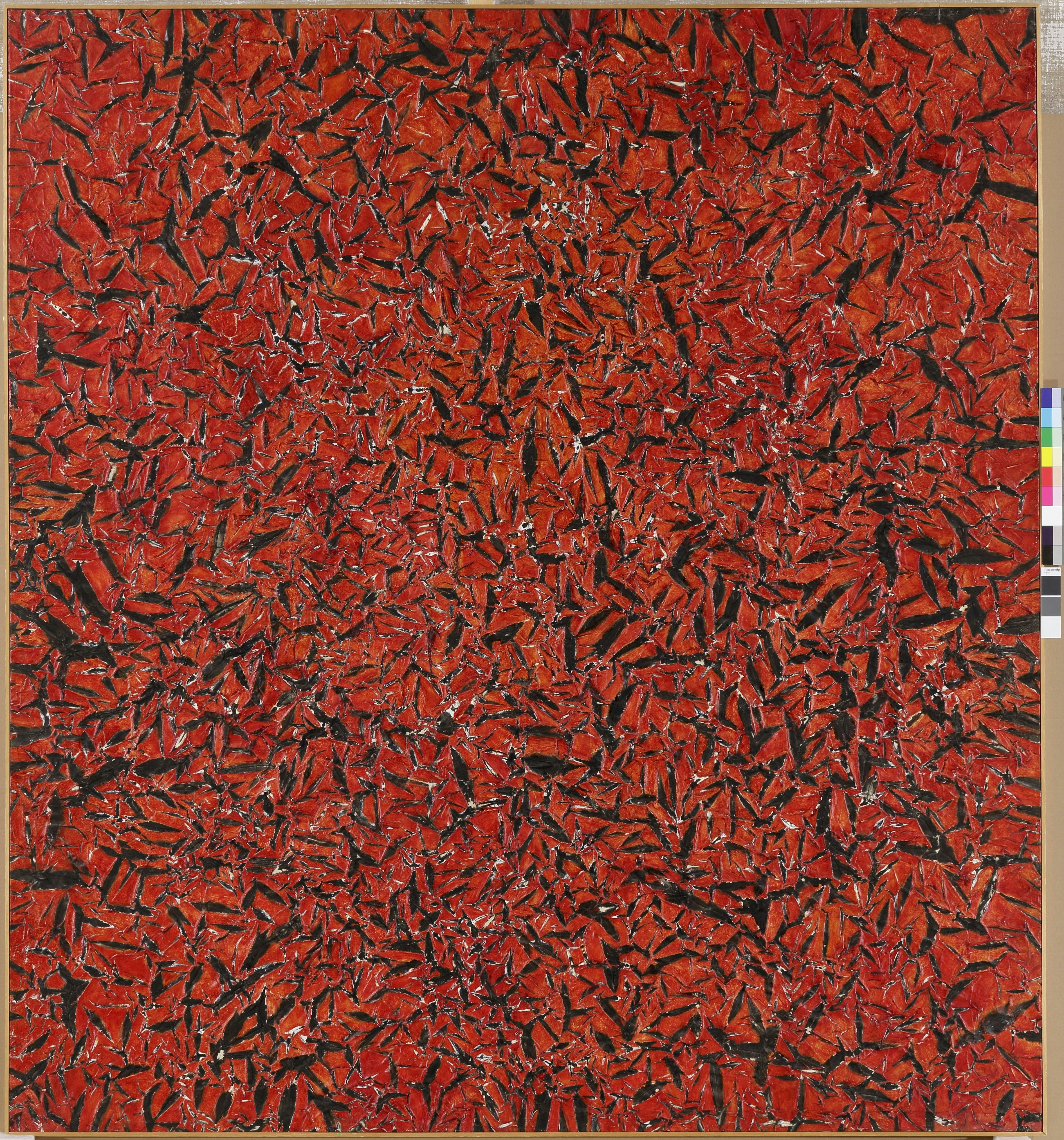Simon Hantaï - Folding

TABULA, MEUN 1975, © Archives Simon Hantaï © Primae / Louis Bourjac
- Date
- From 28.09.2023 to 04.02.2024
- Place
-
Espace Louis Vuitton Osaka
-
Louis Vuitton Maison Osaka Midosuji 5F
-
2-8-16, Shinsaibashi-suji
- Phone
-
+81 3 3515 0855
- Hours
-
12:00 - 20:00
For its fourth exhibition, the Espace Louis Vuitton Osaka is honoured to present "Folding", a retrospective of French artist Simon Hantaï’s oeuvre.
Following the Fondation ’s mission to mount international projects to reach a broader international audience, this exhibition takes part of the “Hors-les-murs” programme that shows holdings of the Collection at the Espaces Louis Vuitton in Tokyo, Munich, Venice, Beijing, Seoul and Osaka.
Simon Hantaï resided in his Hungarian homeland, becoming a student at the Budapest School of Fine Arts until 1948, when he received a government grant to study in Paris, France. Arriving in France after a stint in Italy the following year, he entered a period of experimentation, that led to a certain understanding of Sienese and Florentine painting, as well as lessons of a more abstract nature. The influence of surrealism came at just the right time, helping him to both unleash his vivid artistic imagination and make the most of an expanded interpretation of collage. Hantaï combined painting with animal bones and a variety of other materials more effectively expressing his dark, tormented iconography. This surrealist phase led to an exhibition in 1953, the catalogue of which was prefaced by André Breton, but the phase came to an end in 1955.

ÉTUDE POUR PIERRE REVERDY, 1969 © Primae / David Bordes

ÉTUDE, MEUN 1969 © Primae / Louis Bourjac
For Hantaï’s discovery of Jackson Pollock’s work, brilliantly demonstrating the vitality of abstraction, led him to an understanding of pictorial expression outside any iconographic dictates. Scraping, an exercise in subtraction, was symptomatic of this reconquering of an unprecedented space, first under the auspices of the sexual and linguistic delusions of pataphysics French writer Jean-Pierre Brisset, then inspired by mystical and liturgical writings. His Ecritures (“writings”) are the products of a crucial contemplation of signs as a surviving trace on the palimpsest of memory. His pliage comme méthode (“folding as method”) comes directly from this experience of the burial and emergence of signs and shapes on the canvas surface. Following various protocols for folding and crumpling the canvas, Hantaï covered the remaining portions of the surface with paint in such a way that, when the canvas was unfolded, the result was both painted and unpainted areas. The self-generated painting became the miming of the incarnation of the Son of God: the first folds, grouped under the title “Le Mur,” known as Manteaux de la Vierge, underscore this theological dimension. In 1967, he gave the generic title of Peintures mariales [Cloaks] to the four series of the decade: in addition to the one already mentioned, “La Porte”, called the Catamurons (1963-1964), Maman! Maman!, known as La Saucisse (1964-1965), and the Meuns (1967-1968), named after a small village in the forest of Fontainebleau, France.

MARIALE m.a.4, PARIS 1960 © Primae / David Bordes
From 1968 to 1976, Hantaï varied the protocols of pliage (folding) in the Études [Studies], the Blancs [Whites] and the Tabulas. A second series of Tabulas (1980-1982) was followed by his “retirement” (which did not mean that he stopped painting, as evidenced by his Sans titre in 1984), that nevertheless included the Laissées [Leftovers] exhibition in 1998, and by digital prints under the title Suaire in 2001.
This exclusive exhibition, specifically conceived for the Espace Louis Vuitton Osaka, follows Simon Hantaï. The Centenary Exhibition and the display of a large Tabula in Charlotte Perriand: Inventing a New World exhibition, both presented at the Fondation Louis Vuitton in Paris, respectively in 2022 and 2019. It browses a vast series of works, all belonging to the Collection, created between the early 1960s and the 1980s.
Simon Hantaï
Simon Hantaï was born in 1922 in Bia, Hungary, and died in Paris, France, in 2008. After studying at the Budapest School of Fine Arts, he moved to Paris in 1949 where he was immersed in the Surrealism movement. His oeuvre fluctuates through multiple artistic paths, departing from the surrealist to action painting and abstract expressionism. In 1960, Hantaï “blindly” painted a previously folded surface by covering it with colours. From that point on, he would apply this method to each series of paintings, but in very different modes, such that Hantaï was able to develop and revive formal and original compositions, often on a large scale.
In this way, he established himself as one of the greatest colourists of his day. At that time, his work was widely known across the French art scene and influenced an entire generation of aspiring younger painters. He was then absent for an extended period that was marked only occasionally by events such as a new series of works, the Laissées [Leftovers], which appeared in the 1990s. There, Hantaï cut up large Tabulas from the 1980s, extracting fragments of them that became full-fledged works in their own right.


